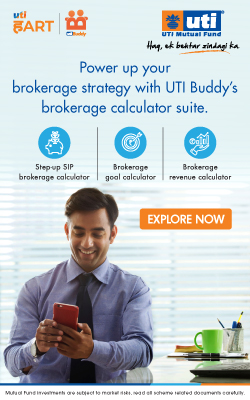Asking increases client satisfaction and loyalty. Acting on it pushes clients toward that engaged status.
In my observation one primary factor in the success of a client advisory board, and the degree of impact it has on the advisors practice, is whether the financial advisor utilizes the board strategically.
There are many issues and questions you can ask an advisory board to discuss. On one level there is getting feedback. How do you like our new reports? Is there the right level of detail in our financial plans? Do our portfolio reviews cover issues in enough depth? Do we respond to calls and questions quickly enough? This kind of information is useful, and can help you make some adjustments to improve your practice.
On another level, you can engage a client advisory board in determining how to address an issue that you believe clients may be concerned about. Specifically, they can be critical in designing a communication strategy for a major event like the retirement of a partner, a proposed merger, or changing broker-dealers. Getting guidance from some of your best clients on how to address these kinds of issues can mean the difference between success and failure of the transition.
The most valuable kind of engagement with your client advisory board is in determining the strategic direction of your practice. What kind of client should we serve? Are we providing the right mix of services, or should we add or discontinue some? What should we do with clients who no longer fit our target market? Questions like these can alter the fundamentals of your business plan. That is why they hold the potential to be the most valuable kinds of discussions you can be having with your best clients.
They are also some of the scariest questions an advisor can put before an advisory board. What if the clients want the practice to go in a different direction than I wanted to go? What if the clients recommend that we discontinue one of the services I consider to be most important or most valuable? What if the board urges me to pursue a strategy I don't believe will work? What makes those issues so scary is what makes them so valuable. Is it more important to you to implement what you think is best, or to run your business according to what your best clients want most?
The right questions
At first, your board should be focused on clarifying your uniqueness and value. The best initial questions can revolve around why clients hired you initially and why they continue to work with you. You may be surprised at the answers. It is also critical to not accept the initial responses – they will be the most superficial and devoid of value in differentiating you from other advisors. Board members’ first answers to the “why do you continue to work with this advisor” question are likely to be things like “trust, confidence, peace of mind” which tell you nothing about what you do to make the clients so loyal to you. If this is to be a valuable exercise, you will need to probe below the surface.
From there, you may want to dig into more specifics about the things you do that clients value most. Again, you may be surprised. What clients appreciate and attach the most value to are things you may consider to be minor, or simply part of basic customer service. By the same token, things you are most proud of, like your sophisticated investment management strategy, may not be appreciated by clients – they may not be able to distinguish yours from other advisors’ processes.
Eventually, maybe after 3 or 4 meetings, the topics can swing around more to how clients can help you. They would ideally be framed as advice on how to most effectively market your practice.
Utilizing feedback
Communicating results
Here is one critical rule of soliciting feedback: you must do something with it.
Asking increases client satisfaction and loyalty. Acting on it pushes clients toward that engaged status. Not acting on it pushes them away from being engaged.
In making use of client feedback, the first step is to communicate what you have discovered. If you have surveyed your clients, you probably can't and shouldn't actually publish the survey results. (At the very least, it could be a compliance issue). You can, however, discuss the messages that came through, and newsletters, on your website, and in client meetings. New only a small handful of your best clients will have the opportunity to participate in your advisory board, but you can broadcast the summary of what was discussed to your entire client base. You can describe the kinds of things that came up in conversation that your board members recommended you make changes to. You can let clients know what you will be reviewing with an eye toward making improvements.
Once you actually change something in your practice, you will want to have a communications plan to announce those changes. Letting your clients know that you made changes to your practice based on client feedback completes the loop, reinforces how important the clients are to you, and demonstrates that you take their wants and needs seriously.
Adjusting practice processes
In addition to communicating the feedback you have received and what you might do with it, actually doing it is equally crucial. Let me offer an example of the implications of not following through.
I had worked with a financial planning firm that was proud of how thorough and detailed its financial planning process was. They found out through surveys and their advisory board that clients could not understand or appreciate the dense tables of numbers that populated their financial plans. They appreciated the firm's expertise and commitment to the planning process, but had difficulty relating to the output. The client advisory board recommended replacing much of the output printed in the financial plans with a few simple graphs.
Planners at the firm resisted. They were proud of the extensive plans that they wrote for clients. The firm did not make any substantial changes to its financial plans. Once enthusiastic advisory board members gradually stopped coming to meetings. Some of the firm's most engaged clients declined further participation. There was no meaningful change in the number of referrals the firm received. Eventually, the firm declined to renew our contract to run the advisory board. In the end, they held an advisory board because they thought it was the thing to do, not because they were open to change.
Also read: How advisors can leverage a client advisory board to maximum benefit Stephen Wershing runs advisory coaching firm www.theclientdrivenpractice.com.
The views expressed in this article are solely of the author and do not necessarily reflect the views of Cafemutual.






